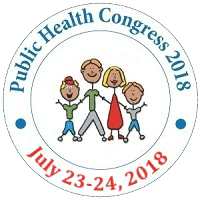
Mohammod Jobayer Chisti
icddr b, Dhaka Hospital, Bangladesh
Title: Pneumonia in severely malnourished children: etiology, diagnosis, management and future direction
Biography
Biography: Mohammod Jobayer Chisti
Abstract
Background: Management of pneumonia in severely malnourished children is critically important in reducing deaths in such children. Understand the etiology of pneumonia in severely malnourished children is one of the essential components of appropriate management. Diagnosis of pneumonia in children with severe malnutrition is also intriguing. Etiology and diagnosis of pneumonia in SAM is not well described in medical literature. Data on management of pneumonia in such children are also lack. Methods: We have done a systematic review using specific search criteria in PUBMED to evaluate the overall role of severe malnutrition in children with pneumonia in SAM children.
Results: Among a total of 215 isolates 26% were Klebsiella and 25% S. aureus species, 18% Pneumococcus, 8% each E. coli and Salmonella species. A recent study conducted in Bangladesh found 87/385 (23%) MTB as the bacterial etiology of pneumonia in SAM children. In SAM children, the sensitivity of fast breathing as a predictor of radio graphically proven pneumonia ranged from 14% to 76%, and specificity from 66% to 100%.
Surprisingly, metabolic acidosis found to have no impact on the diagnostic clinical features of pneumonia in SAM children having diarrhea. Studies revealed that as a first line therapy ampicillin and gentamicin are more effective against enteric Gram-negative bacilli than chloramphenicol in SAM children with pneumonia. Both the groups received in addition to diet, micronutrients, vitamins and minerals.
Conclusions: The currently available data suggests that the spectrum and frequency of causative agents of pneumonia in severely malnourished children differ from that observed in well-nourished children. Clinical signs are relatively poor predictors of pneumonia in severely malnourished children. However, injectable antibiotics in addition to diet, micronutrients, vitamins and minerals are the sine quanon. High prevalence of pulmonary tuberculosis in severely malnourished children having acute pneumonia underscores the importance of further research that may help to evaluate the determinates of TB in such children.

